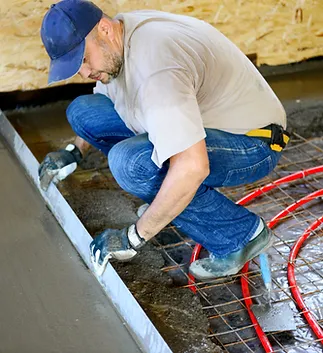When constructing a building, there are many things that need to be taken into consideration. Not the least of these is the floor. It goes without saying that you want a floor to be flat and level. The only exception is if it is in something such as a wet room where you want any water to be able to drain.
In order to achieve as level a surface as possible it is necessary to lay a screed over the substrate before fitting the final floor surface, whatever that may be – tile, wood, carpet, laminate, vinyl, and so on. For many years now it has been traditional to lay a sand and cement screed using a mix of 1 part of cement to between 3 and 4.5 parts of sharp sand. This will produce a reasonably level surface on which to fix the flooring.
However, today we have a new kid on the block in the shape of liquid screeds. These are taking over from sand and cement more and more as architects and contractors realise the many benefits that they have over and above them. As specialists in liquid screed in Oxfordshire, at Top Mix we can supply what you need. Indeed, the majority of our business is in the form of liquid screeds.

Self-Levelling
Just to begin with, as it is in liquid form it is self-levelling. Think about a glass of water: shortly after being poured, the surface is flat. In fact, British Standards has three standards of surface regularity, which is measured using a straightedge of 2 metres and a slip gauge. This measures any gaps under the straightedge and results in SR1, SR2, and SR3. SR1 is High Standard, SR2 is Normal Standard, while SR3 is Utility Standard. A liquid screed will always get to SR2 and very often SR1 whereas a sand and cement screed is usually SR3 or lower.
Then there is the speed of laying. As specialists in liquid screed in Oxfordshire we deliver the screed to site ready mixed and then pump it onto the substrate using a long hose. This way, we can cover an area of up to 2,000 square metres in a single day. Compare that to a worker on hands and knees levelling sand and cement with a trowel!
There are many other advantages as well, including the speed of drying and – when underfloor heating is being installed – a big difference in the amount of energy used and therefore the running costs involved.
Find out more by talking to one of our expert team on 01865 660006.




